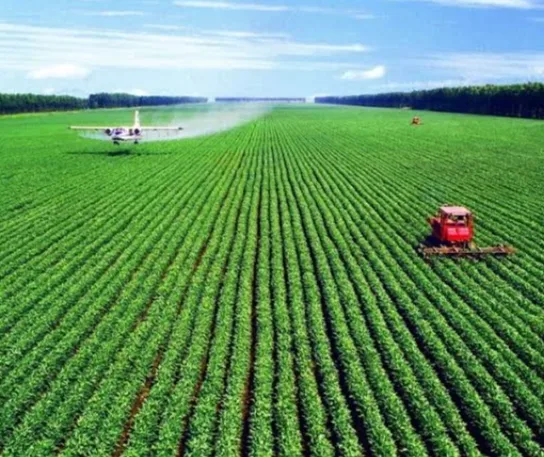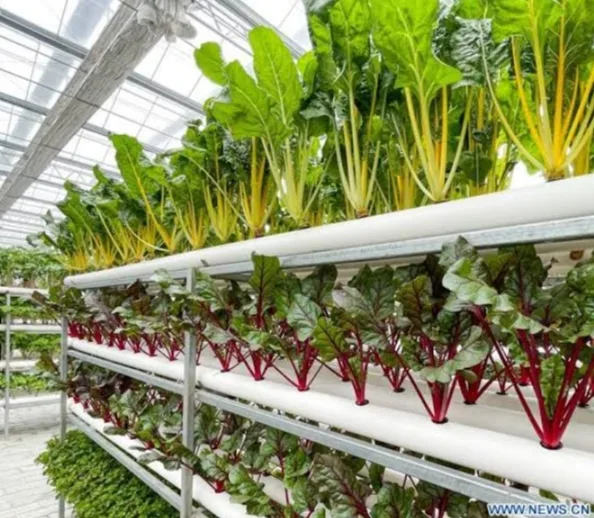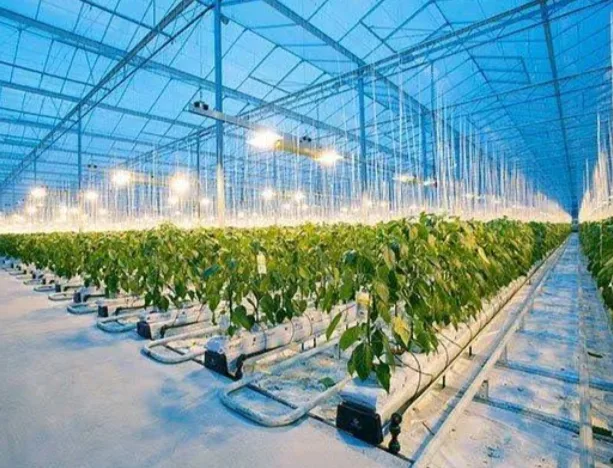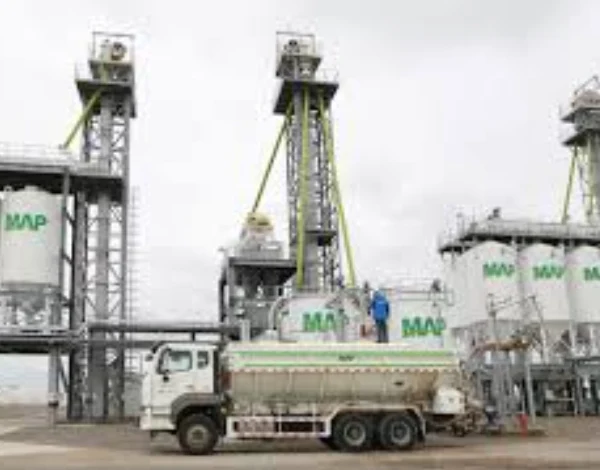Introduction Modern Agriculture In China
China has made remarkable strides in modern agriculture, revolutionizing its traditional farming practices to meet the demands of a rapidly growing population and evolving global markets.
Modern Agriculture in China: A Table Overview
China is a major agricultural producer and consumer, with a rapidly evolving agricultural sector. Here's a table outlining some of the key features:
| Feature | Modern Agriculture in China |
|---|---|
| Crop Production | Rice, wheat, corn, soybeans, cotton |
| Livestock Production | Pork, poultry, beef, dairy |
| Technology Adoption | Rapidly adopting precision agriculture, biotechnology, and automation. |
| Sustainability Focus | Increasing emphasis on sustainable practices, including organic farming and agroforestry. |
| Government Support | Significant government investment in agricultural development and modernization. |
| Challenges | Facing challenges like land fragmentation, water scarcity, and soil degradation. |
| Innovation | Driving innovation in agricultural technology and practices. |
| Global Integration | A major player in global agricultural markets, both as a producer and consumer. |
| Rural Development | Promoting rural development through agricultural modernization. |
Embracing cutting-edge technologies, China has implemented precision farming techniques, leveraging data analytics, and artificial intelligence to optimize crop yields and resource utilization. This technological integration allows farmers to make informed decisions based on real-time data, resulting in increased efficiency and sustainability.
China has prioritized innovation in crop varieties and genetic engineering, developing resilient and high-yielding crops that can withstand diverse environmental conditions. This not only ensures food security but also contributes to global agricultural advancements. The adoption of smart farming equipment, such as drones and autonomous machinery, has further streamlined agricultural operations, reducing labor costs and enhancing productivity. China's commitment to sustainable agriculture is evident through its promotion of organic farming practices and eco-friendly initiatives, aligning with the global push for environmentally conscious food production.
China's modern agricultural practices are not only a testament to its technological prowess but also demonstrate a commitment to addressing the challenges of the 21st century. By embracing innovation, precision, and sustainability, China's agricultural sector has become a model for nations seeking to balance the need for increased food production with environmental stewardship. The nation's achievements in modern agriculture underscore the importance of leveraging technology to create a resilient and sustainable future for global food systems.
China Modern Agriculture Product
China is a leading global producer of various agricultural products, some of the main agricultural products in China include:
1. Rice: China is the world's largest producer of rice, with substantial cultivation in regions like the Yangtze River basin.
2. Wheat: Wheat is a major staple crop in northern China, particularly on the North China Plain.
3. Corn (Maize): China is a significant producer of corn, used both for human consumption and as animal feed.
4. Vegetables: China is a major producer of various vegetables, including potatoes, tomatoes, onions, and others.
5. Fruits: China is a leading producer of fruits such as apples, oranges, bananas, and grapes.
6. Pork: Livestock farming, particularly pork production, is significant in China, making it the world's largest consumer and producer of pork.
Modern Agriculture In China: Production Data
Here is approximate production data for some of the main agricultural products in China:
1. Rice (2019): Around 148 million metric tons.
2. Wheat (2019): Approximately 134 million metric tons.
3. Corn (2019): China produced over 260 million metric tons.
4. Vegetables (2019): China is a major producer of various vegetables, with total production exceeding 700 million metric tons.
5. Fruits (2019): Production figures vary by type, but China is a leading producer of apples, oranges, bananas, and grapes, among others.
6. Pork (2019): China is the largest producer of pork globally, with production exceeding 54 million metric tons.
Modern Agriculture In China: Government Policy
China's modern agriculture success is also attributed to strategic government policies that foster innovation, sustainability, and efficiency.
1. Technology and Innovation Support
The Chinese government has implemented policies encouraging research and development in agricultural technology. Subsidies and incentives are provided to farmers adopting modern techniques, such as precision farming, genetic engineering, and smart machinery. This commitment to innovation enhances productivity and sustainability.
2. Land Reforms
China's land reforms have played a pivotal role. Policies allowing farmers to lease or transfer land rights encourage consolidation of smaller plots into more efficient and larger-scale farms. This promotes economies of scale, enabling the adoption of advanced technologies and practices.
3. Rural Infrastructure Development
To bridge the urban-rural divide, the government invests in rural infrastructure. Improved transportation networks, irrigation systems, and storage facilities enhance the efficiency of the agricultural supply chain. This development uplifts rural communities and strengthens the overall agricultural sector.
4. Environmental Sustainability
China recognizes the importance of sustainable agriculture. Policies promote eco-friendly practices, including organic farming and reduced chemical usage. The government encourages the adoption of renewable energy sources in farming operations, aligning agricultural practices with environmental conservation goals.
5. Market Support and Price Stability
To ensure farmers' livelihoods, the government implements policies that stabilize crop prices and provide financial support during adverse conditions. This stability encourages farmers to invest in modern technologies, knowing they have a safety net in challenging times.
In summary, China's government policies create a conducive environment for the adoption of modern agricultural practices, fostering innovation, sustainability, and the overall development of the agricultural sector.
Modern Agriculture In China: Regulations
Several regulations in China have contributed to the development of modern agriculture.
Here are a few notable ones:
1. Land Contracting Law (2002):
- This law clarified and strengthened land property rights, encouraging the transfer and consolidation of land. It provided a legal framework for long-term land contracts, facilitating more efficient and modern agricultural practices.
2. Science and Technology Progress Law (1995, revised in 2007):
- The revision of this law emphasized the role of science and technology in agricultural development. It provided a basis for incentives and support for farmers adopting modern technologies in aagricultu.
3. Environmental Protection Law (1989, revised in 2015):
- The revised law placed a stronger emphasis on environmental considerations in agriculture. It set standards for reducing
Key Factor for Modern Agriculture in China
Several key factors contribute to the modernization of agriculture in China:
1. Technology Adoption
China has embraced advanced agricultural technologies, including precision farming, drones, and smart machinery. This has improved efficiency and productivity in the sector.
2. Government Support
The Chinese government has implemented policies and initiatives to support modern agriculture. This includes financial incentives, subsidies, and investment in research and development.
3. Research and Development
Investment in agricultural research has led to the development of high-yield crop varieties, improved farming practices, and the adoption of biotechnology in agriculture.
4. Infrastructure Development
Infrastructure projects, such as irrigation systems and transportation networks, play a crucial role in supporting agricultural activities and ensuring the smooth flow of agricultural products.
5. Market-oriented Reforms
China's shift toward a more market-oriented agricultural system has encouraged efficiency, competitiveness, and innovation in the sector.
6. Education and Training
Programs aimed at educating farmers about modern farming techniques and providing training on the use of new technologies contribute to the modernization of agriculture.
7. Sustainable Practices
There is an increasing focus on sustainable and eco-friendly agricultural practices to address environmental concerns and ensure long-term productivity.
8. Globalization of Agriculture
China's integration into the global economy has facilitated the exchange of agricultural knowledge, technologies, and practices, contributing to modernization.
Modern Agriculture In China: Technology Adoption
Indeed, modern agriculture in China has witnessed remarkable advancements in technology adoption.
Here are key aspects highlighting the amazing progress:
1. Precision Farming
China has embraced precision agriculture, utilizing technologies such as GPS-guided tractors and drones. This enables farmers to optimize resource use, reduce waste, and enhance overall efficiency.
2. Smart Irrigation Systems
Automated and data-driven irrigation systems help optimize water usage, ensuring crops receive the right amount of water at the right time. This is crucial for sustainable agriculture, especially in water-scarce regions.
3. Biotechnology
China has invested significantly in biotechnology, including the development of genetically modified (GM) crops with improved resistance to pests and diseases. This enhances crop yields and reduces the need for chemical inputs.
4. Data Analytics and Farm Management
Farmers are increasingly using data analytics to make informed decisions about crop management. This involves analyzing data on weather patterns, soil conditions, and crop health to optimize farming practices.
5. E-commerce Platforms
The integration of e-commerce platforms has facilitated efficient and transparent supply chains, connecting farmers directly with consumers. This has benefits in terms of reducing intermediaries and ensuring fair pricing.
6. Robotics and Automation
Robotic technologies are being employed in various agricultural tasks, from planting and harvesting to sorting and packaging. This not only boosts efficiency but also addresses labor shortages in rural areas.
7. Mobile Apps for Farmers
Mobile applications provide farmers with real-time information on weather forecasts, market prices, and agricultural best practices. This empowers them to make informed decisions and adapt to changing conditions.
This blend of traditional agriculture with cutting-edge technologies has positioned China at the forefront of modern agricultural practices, contributing to increased productivity and sustainability.
Modern Agriculture In China: Artificial Intelligent Adoption
China has made significant strides in adopting artificial intelligence (AI) in modern agriculture, transforming traditional farming practices.
Here's how AI has been amazing in the context of Chinese agriculture:
1. Precision Agriculture with AI: AI-driven algorithms analyze vast amounts of data, including satellite imagery, weather patterns, and soil conditions. This information is used to make precise decisions on planting, irrigation, and crop protection, optimizing resource utilization.
2. Smart Crop Monitoring: AI-powered sensors and drones are employed for real-time monitoring of crop health. These technologies can detect signs of diseases, pests, or nutrient deficiencies early, allowing farmers to take timely corrective measures.
3. Automated Harvesting: AI-driven robotics and automation are increasingly used for harvesting crops. Intelligent machines equipped with computer vision can identify and harvest ripe crops, reducing labor requirements and improving efficiency.
4. Predictive Analytics: AI algorithms analyze historical and real-time data to predict crop yields, market trends, and optimal planting times. This enables farmers to make data-driven decisions and adapt to changing conditions.
5. Chatbot Assistance for Farmers: AI-powered chatbots provide farmers with instant support and information. These virtual assistants help farmers troubleshoot issues, access market prices, and receive guidance on best agricultural practices.
6. Supply Chain Optimization: AI is applied to optimize the agricultural supply chain. This includes predicting demand, improving logistics, and reducing waste by ensuring timely and efficient delivery of agricultural products to markets.
7. Facial Recognition for Livestock Management: AI-driven facial recognition technology is used for livestock management. This includes monitoring the health and behavior of animals, improving overall farm efficiency and animal welfare.
The integration of artificial intelligence into agriculture in China not only enhances productivity but also contributes to sustainable and resource-efficient farming practices. As technology continues to advance, AI is expected to play an increasingly vital role in shaping the future of Chinese agriculture.
Modern Agriculture In China: International Market Share
China has a significant international market share in various agricultural products. However, specific market shares can fluctuate based on global demand, production levels, and trade dynamics.
Here are some key areas where China has had a notable presence:
1. Rice and Wheat
China is a major exporter of rice and wheat, contributing significantly to the global market for these staple crops.
2. Vegetables and Fruits
Chinese vegetables and fruits, such as apples, garlic, and kiwi, have a substantial share in the international market.
3. Processed Agricultural Products
China exports a variety of processed agricultural products, including frozen vegetables, canned goods, and processed meats.
4. Aquaculture Products
China is a leading exporter of aquaculture products, such as fish and seafood, playing a crucial role in the global seafood market.
5. Tea
China is renowned for its tea production and export, with Chinese tea varieties being widely consumed and recognized globally.
Modern Agriculture In China: General Trends
Here is General Trends for Amazing Modern Agriculture In China
1. Rice and Wheat: China is among the top exporters globally, with a substantial market share in the international trade of rice and wheat.
2. Vegetables and Fruits: China exports a significant amount of vegetables and fruits to various countries. For example, it has a notable presence in the global garlic market, being a major supplier.
3. Processed Agricultural Products: China's processed agricultural products, including frozen vegetables, canned goods, and processed meats, contribute to its presence in international markets.
4. Aquaculture Products: China is a major exporter of fish and seafood, ranking high in the global seafood market.
5. Tea: China is one of the largest tea producers and exporters globally, with a substantial market share in the international tea trade.
Modern Agriculture In China: Private Sector Contributions
The private sector has played a pivotal role in the amazing advancements of modern agriculture in China.
Here are key contributions:
1. Technology Innovation
Private companies in China have been at the forefront of developing and implementing cutting-edge agricultural technologies. This includes precision farming equipment, drones, AI-driven solutions, and smart irrigation systems.
2. Investment in Research and Development
Private enterprises invest significantly in research and development to create new crop varieties, improve agricultural practices, and enhance overall efficiency. This has led to innovations that benefit both large-scale and small-scale farmers.
3. E-commerce Platforms
Private sector companies have created and expanded e-commerce platforms for agricultural products. These platforms connect farmers directly with consumers, facilitating efficient and transparent transactions while ensuring fair pricing.
4. Supply Chain Optimization
Private firms contribute to optimizing the agricultural supply chain. This involves leveraging technology to streamline logistics, reduce waste, and improve the overall efficiency of getting products from farms to markets.
5. Farm Management Software
Private companies develop and provide farmers with advanced farm management software. These tools utilize data analytics to offer insights on crop health, weather patterns, and optimal planting times, empowering farmers to make informed decisions.
6. Biotechnology Advancements
Private sector contributions to biotechnology have led to the development of genetically modified crops with improved resistance to pests and diseases. This has enhanced crop yields and sustainability.
7. Financial Support for Farmers
Private enterprises provide financial support to farmers through various means, including loans and investment in agricultural projects. This support helps farmers adopt modern technologies and improve their overall productivity.
The collaboration between the private sector, government initiatives, and research institutions has created a dynamic environment for the advancement of modern agriculture in China. Private companies continue to drive innovation, foster sustainability, and contribute significantly to the overall growth and efficiency of the agricultural sector.
Modern Agriculture In China: Company Support
Here are some companies that have played roles in advancing modern agriculture in China:
1. Alibaba Group: Through its affiliate Ant Group, Alibaba has been involved in developing digital agriculture platforms, connecting farmers with consumers and providing data-driven insights.
2. JD.com (JD): JD has invested in smart agriculture technologies, including drone and robotics applications for crop monitoring and precision farming.
3. Baidu: Known for its involvement in artificial intelligence, Baidu has explored AI applications in agriculture, such as developing smart irrigation systems and crop monitoring solutions.
4. Hunan Valin Xiangtan Iron and Steel: This company has ventured into vertical farming, using technology to grow crops in controlled environments.
5. BYD Company Ltd.: Primarily known for electric vehicles, BYD has also entered the agriculture sector with innovations like solar-powered agricultural equipment.
6. Win-All Hi-Tech Seed Co. Ltd.: This Chinese seed company has focused on research and development in agriculture, contributing to advancements in crop genetics.
It's essential to note that the landscape of companies involved in modern agriculture in China is diverse and dynamic. New players may have emerged, and existing ones may have evolved their strategies.
Modern Agriculture In China: Financial Support
The modernization of agriculture in China has been supported by various financial initiatives, including government policies and private sector investments.
Here are key aspects of financial support contributing to the advancements:
1. Government Subsidies
The Chinese government provides subsidies to farmers to encourage the adoption of modern agricultural practices. These subsidies may cover aspects such as technology adoption, equipment purchase, and sustainable farming methods.
2. Rural Credit Cooperatives
China has established rural credit cooperatives that offer financial services to farmers, including loans for agricultural development, machinery purchase, and infrastructure improvement.
3. Agricultural Development Banks
Specialized banks, such as the Agricultural Development Bank of China, focus on providing financial support to the agricultural sector. These institutions offer loans and credit facilities to farmers and agricultural businesses.
4. Technology Innovation Funds
Government and private sector initiatives invest in technology innovation funds specifically dedicated to advancing modern agricultural technologies. These funds support research and development projects, fostering innovation in the sector.
5. Public-Private Partnerships (PPPs)
Collaborations between the government and private enterprises involve financial support for agricultural projects. This includes initiatives to improve infrastructure, implement new technologies, and enhance overall agricultural productivity.
6. Insurance Programs
To mitigate risks associated with agriculture, the government has implemented agricultural insurance programs. These programs provide financial protection to farmers in case of crop failure, natural disasters, or other unforeseen events.
7. Investment from Agricultural Corporations
Private companies and agricultural corporations in China invest in modern agriculture. Their financial support goes into technology adoption, research, and the development of sustainable farming practices.
8. Microfinance Initiatives
Microfinance institutions and initiatives provide small loans to individual farmers and agricultural cooperatives, promoting financial inclusion and supporting local farming communities.
These diverse financial support mechanisms contribute to creating an environment where farmers and agricultural businesses in China can embrace modern practices, adopt advanced technologies, and improve overall productivity and sustainability.
Modern Agriculture In China: Infrastructure and Supply chain
China has made remarkable strides in modernizing its agriculture sector through extensive investments in infrastructure and supply chain improvements. The country has implemented advanced technologies like precision farming, drones, and smart irrigation systems to enhance productivity.
Let's consider an example of modern agriculture in China, specifically focusing on high-tech greenhouse cultivation.
Infrastructure
China has invested heavily in state-of-the-art greenhouse facilities equipped with automated climate control systems, advanced irrigation technologies, and soil monitoring sensors. These greenhouses are designed to optimize growing conditions, providing a controlled environment for crops throughout the year.
Supply Chain
Once crops are ready for harvest, an efficient supply chain comes into play. Automated harvesting equipment is used to gather the produce, minimizing manual labor and ensuring speed and precision. The harvested goods are then transported using a well-connected network of refrigerated trucks, maintaining the freshness of the produce during transit.
Technology Integration
In this modern agriculture example, technology plays a crucial role. Drones are employed for aerial surveys, collecting data on crop health and growth patterns. Artificial intelligence algorithms analyze this data, helping farmers make informed decisions regarding irrigation, fertilization, and pest control.
Market Access
To ensure a smooth market connection, an online platform allows farmers to connect directly with consumers or distributors. This facilitates transparent transactions and provides consumers with information about the origin and quality of the produce.
This integrated approach in infrastructure, supply chain management, and technology adoption exemplifies China's commitment to advancing its agriculture sector.
Additionally, China has developed comprehensive transportation networks and cold chain facilities to efficiently transport and store agricultural products. These advancements contribute to the overall efficiency and sustainability of China's agriculture, ensuring a reliable supply chain for both domestic consumption and international trade.
Future of Modern Agriculture In China
The future of modern agriculture in China is likely to be shaped by several key trends and factors:
Technological Advancements: Continued integration of advanced technologies such as artificial intelligence, big data, and the Internet of Things (IoT) will play a crucial role. Smart farming practices, precision agriculture, and robotics are expected to become more widespread.
Sustainable Agriculture: China is likely to place increased emphasis on sustainability and environmental conservation. Practices that focus on soil health, water conservation, and reduced use of chemical inputs may gain prominence.
Biotechnology and Genetically Modified Crops: Research and development in biotechnology, including the creation of genetically modified crops, may continue to address challenges such as pests, diseases, and climate change impacts.
Digitalization of Agriculture: The digital transformation of agriculture is expected to accelerate, with farmers adopting digital platforms for crop management, market access, and real-time decision-making.
Urban Agriculture and Vertical Farming: Given the rapid urbanization in China, there could be a growing trend toward urban agriculture and vertical farming. These practices can help address space constraints and reduce transportation distances.
E-commerce Integration: The integration of e-commerce platforms in agriculture is likely to expand. Direct-to-consumer models and online marketplaces can provide farmers with broader market access and consumers with fresher produce.
Government Initiatives: China's government is expected to continue supporting modernization efforts through policies, subsidies, and incentives. Initiatives may focus on rural development, technology adoption, and sustainable practices.
Global Collaboration: China may increasingly engage in international collaborations and partnerships to share knowledge, technologies, and best practices in agriculture. This could contribute to global food security and sustainable agricultural development.
Climate Resilience: With the increasing impact of climate change, there may be a greater focus on developing crops and practices resilient to extreme weather conditions, ensuring food security in the face of changing climate patterns.
Consumer Preferences: Shifting consumer preferences for healthier and more sustainably produced food may influence agricultural practices. This could lead to increased demand for organic and locally sourced products.
The future of modern agriculture in China will likely involve a holistic approach that balances technological innovation, environmental sustainability, and the socio-economic well-being of rural communities. Ongoing developments in policy, technology, and global markets will continue to shape the trajectory of agriculture in China.
Conclusion for Modern Agriculture In China
The trajectory of modern agriculture in China is characterized by a remarkable fusion of technological innovation, sustainable practices, and strategic financial support.
The dynamic landscape has seen the rapid adoption of cutting-edge technologies, including artificial intelligence, precision farming, and smart irrigation. Government initiatives, subsidies, and collaboration with the private sector have played pivotal roles in driving this agricultural revolution.
Notable achievements include China's position as a global leader in the production of staple crops like rice and wheat, coupled with advancements in biotechnology and genetic engineering. The integration of e-commerce platforms has facilitated efficient supply chains, connecting farmers directly with consumers.
Looking ahead, the future of modern agriculture in China holds promises of continued technological advancements, increased emphasis on sustainability, and potential shifts in consumer preferences. Collaboration on a global scale, climate resilience, and ongoing government support are expected to shape the evolving landscape of agriculture in China, ensuring food security and fostering innovation in this critical sector.
















